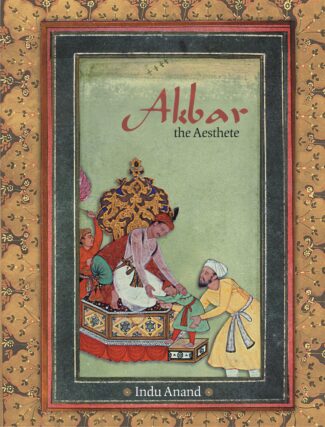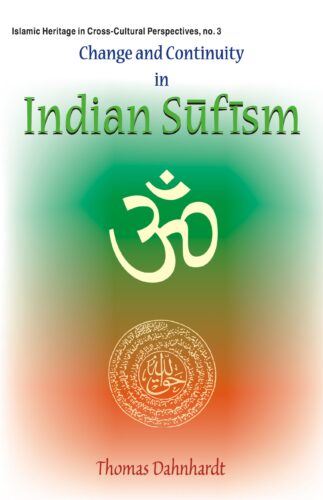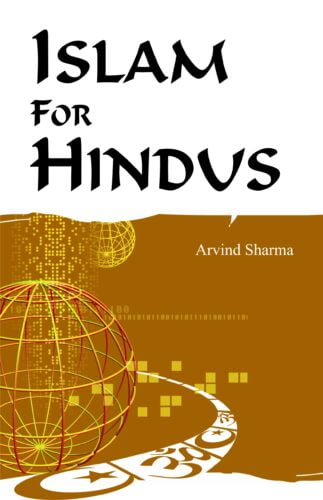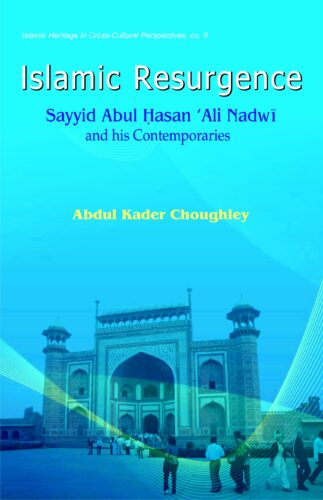Showing 1–10 of 20 results

Akbar, the most powerful Mughal emperor, was a great aesthete and promoter of arts. Eminent Persian and Indian artists thronged his Royal Studio who were studiously committed to paint numerous emotive miniatures of style and substance, communicating highly complex narratives. These minitatures are a beautiful manifestation of human expressions, vividly encapsulating moments of history for posterity.
Mughal miniatures are a vivid account of the cultural, sociopolitical scenario of the Mughal era. Jalal-ud-Din Muhammad Akbar, the most powerful Mughal emperor, was a great aesthete and promoter of arts. Eminent Persian and Indian artists thronged his Royal Studio and were encouraged to paint numerous emotive miniatures of style and substance, communicating highly complex narratives. These miniatures are a beautiful manifestation of human expressions, vividly encapsulating moments of history for posterity.
This book combines the sources and methodology of history and art history of the Mughal era, and is an analysis of a select group of paintings of Akbar’s reign. The miniature paintings incorporate a wide variety of rich, vibrant and varied themes, ranging from durbar scenes, depicting Akbar in different moods and forms, the princes and nobles in their finery, hunting and battle scenes, elaborate scenes of royal births, construction scenes, ascetics, common man, and countryside scenes, to the flora and fauna. Individual analyses of these miniatures, shows the manner of their composition and the inherent value of their sociocultural content in a lively manner. These paintings became a passion and a diversion for Akbar, who had an innate aesthetic sense.
However, there are hardly any true-to-life paintings of women of the royal seraglio. This book thus attempts to cover some images of femininity, whether it is of Queen Alanquwa, Akbar’s mother, or of Madonna as sacred mothers, and women, per se, in different roles. These miniatures make one wonder how much these women contributed to the life of Mughal India.
This unique volume, having given transliteration and translation of the original Persian text of the miniatures, provides an insight into Akbar as an aesthete, and will help academics and laymen alike in appreciating the beauty and history of Akbar’s period.

This book is a survey of the birds and animals used in Mughal paintings, especially during the reigns of Emperors Akbar and Jahangir. It deals with the different perspectives of the two rulers in preserving for posterity the birds and animals found in their times.
The depiction of flora and fauna has been an intrinsic part of Indian painting traditions. The Mughals in their turn, in their fascinating paintings, used the bird and animal imagery to lend a special quality to their art of painting. This book, with over 70 illustrations, is a survey of the birds and animals used in Mughal paintings, especially during the reigns of Emperors Akbar and Jahangir. With historical details, it shows that the depiction of various kinds of birds and animals played a significant role in conformity with the context or the demands of the narratives. The artists painted both wild and domestic animals with equal competence. Outlining the differences in the paintings under the Mughal rulers themselves with regard to depiction of fauna, it notes that while Akbar was interested in historical, mythological or anecdotal events, Jahangir introduced album paintings and evinced interest in individual portrait studies of fauna. In all, it showcases the meticulous depiction of fauna in Mughal art and its persevering beauty. It mentions the names of a host of artists who executed the paintings and the many illustrated manuscripts mythological, historical and on popular fables that saw lavish use of paintings with faunal imagery. The book will interest historians especially those studying art history of the medieval period.

Dr. Thomas Dahnhardt deals with the evolution of the Indian lineage of the Naqshbandiyya also called Mujaddidiyya to study the spiritual symbiosis between the Hindu and Muslim communities. He surveys various masters of the tradition, the establishment of a new khanaqah and the emergence and methodology of the Hindu offshoot of the Mujaddidiyya Mazhariyya.
The common heritage of India is an active concept expressing itself in the myriad forms of integration of diverse cultures and traditions. Change and Continuity in Indian Sufism explores this common heritage through a study of the esoteric relationship between Indias two major religious traditions, Hinduism and Islam as expressed in the sufi tradition. Dr. Thomas Dahnhardt focuses on the evolution of the Indian lineage of the Naqshbandiyya, generally known as the Mujaddidiyya, in Indian sufism as an example of the intense spiritual symbiosis between the Hindu and Muslim communities. Based on a field study among the Hindu and Muslim representatives of the Naqshbandiyya lineage, he presents a social and historical study of the Naqshbandiyya Mujaddidiyya, surveying the various masters of the tradition and taking up specifically the establishment of a new khanaqah of the Mazhariyya branch of the Mujaddidiyyal in Old Delhi, one of the most important Naqshbandi centres of the tradition in the Indian subcontinent. The work goes in detail into the emergence, doctrines and methodology of the Hindu offshoot of the Mujaddidiyya Mazhariyya along with creation of regional sub-Hindu branches. The book would be useful to scholars of inter-religious studies, Sufism and Indian religious traditions as well as general readers interested in the process of integration of traditions and communities.

Dr. Thomas Dahnhardt deals with the evolution of the Indian lineage of the Naqshbandiyya also called Mujaddidiyya to study the spiritual symbiosis between the Hindu and Muslim communities. He surveys various masters of the tradition, the establishment of a new khanaqah and the emergence and methodology of the Hindu offshoot of the Mujaddidiyya Mazhariyya.
The common heritage of India is an active concept expressing itself in the myriad forms of integration of diverse cultures and traditions. Change and Continuity in Indian Sufism explores this common heritage through a study of the esoteric relationship between Indias two major religious traditions, Hinduism and Islam as expressed in the sufi tradition. Dr. Thomas Dahnhardt focuses on the evolution of the Indian lineage of the Naqshbandiyya, generally known as the Mujaddidiyya, in Indian sufism as an example of the intense spiritual symbiosis between the Hindu and Muslim communities. Based on a field study among the Hindu and Muslim representatives of the Naqshbandiyya lineage, he presents a social and historical study of the Naqshbandiyya Mujaddidiyya, surveying the various masters of the tradition and taking up specifically the establishment of a new khanaqah of the Mazhariyya branch of the Mujaddidiyyal in Old Delhi, one of the most important Naqshbandi centres of the tradition in the Indian subcontinent. The work goes in detail into the emergence, doctrines and methodology of the Hindu offshoot of the Mujaddidiyya Mazhariyya along with creation of regional sub-Hindu branches. The book would be useful to scholars of inter-religious studies, Sufism and Indian religious traditions as well as general readers interested in the process of integration of traditions and communities.

This book vividly analyses the Islamic legal theory and its development in varied phases, encompassing various regions, intellectual approaches and social practices, making it an appropriate legal system. It also features the great jurists of Central Asia and their monumental works.
Central Asia, since eighth century ce, has remained as one of the heartlands of Islam. Mawara al-Nahr (Transoxiania) is a name to reckon with in the annals of Islamic history and jurisprudence. The Abbasid rule (ce 7501258) in this steppe region paved the way for setting the Islamic culture, and the reflection of positive results and Islamic ideology in all facets of life, nourishing the Islamic tradition and immensely contributing to the various socio-political institutions as well as diverse fields of knowledge. The early development of Islamic sciences and the involvement and contribution of Muslim intellectuals of Central Asia in their further growth remain as a splendid chapter of the Islamic history.
This book represents Islam as a constructive force that nourished scholarship in varied Islamic sciences, especially in Islamic jurisprudence. It vividly analyses the Islamic legal theory and its development in varied phases, encompassing various regions, intellectual approaches and social practices, making it an appropriate legal system. Central Asia, along with other Islamic intellectual centres like Baghdad, Basrah, Kufa and Madina, maintained the lure of standardized scholarship.
This volume, while featuring the great jurists of Central Asia and their monumental works to the Islamic jurisprudence, initiates a debate on the relevance of Islamic legal theory and its interpretation in the contemporary socio-political scenario, thus providing certain possibilities of rediscovering Islamic jurisprudence for the present times. A book of high academic value, it should impress all in the field of Islamic history and legal system.

The book containing spiritual and literary discourses of Sufi Shaikh Nizamuddin Awliya focuses on values that can create a true human being. It provides information on many Sufi saints and the ulama.
Fawaid al-Fuad is a monumental work of spiritual and literary discourses of Shaikh Nizamuddin Awliya who lived in medieval India. The book is a didactic classic in the form of recorded conversations. Devoid of supernatural elements, it provides useful information about a large number of Shufi saints and ulama. A living testimony to the accord between the Shariah and Tariqah, therein he spoke on the necessity of practising values that could transform man into a true human being, full of love, tolerance, forgiveness, patience, forbearance, sincerity in devotion, adherence to truth and generosity. Sufism or Islamic spiritualism that flourished in India with the advent of the Turkish rule in the 13th century forms the backdrop of this work. The moral teachings of his spiritual mentors, dwelt at length, in various majlises, constitute the bed-rock of this treatise which has great literary distinction. Written in fluent Persian prose style, it is embellished with apt verses to elucidate the points of discussion. The Shufi way of life and the teachings of the Chishtiyah order have been vindicated as a sharp contrast to the material prosperity, territorial conquest and the lust for power in the contemporary world. The compiler Amir Hasan Ala sijzi a great scholar of Persian language, has done a yeomans service in giving a definite shape to this monumental work. The Shaikhs didactic intention and spiritual flavour have been well-preserved through the compilers directness of style. Fawaid al-Fuad rendered into English from the original Persian text based on an ably edited edition of the book represents a serious attempt to understand the nuances of the mystic mind of a great shufi saint of the sub-continent. This academic venture of Prof. Faruqi will be of great use to lay readers as well as the scholars of Islamic mysticism.

In this first-ever study exploring exclusively Gandhis attitude to Islam, the author puts together many of Gandhis observations about Prophet Mohammed, the holy Quran, and the Islamic faith.
Look at him as we may: whether as an exceptional human being, a modern-age prophet, a unique politician, or a charismatic leader of non-violent movement, Gandhis many-sidedness is proverbial. And, then, he was a religious genius as well with genuine tolerance and respect for all mankinds faiths. Here is the first ever study exploring exclusively Gandhis attitude to Islam, from his childhood to the last years of his phenomenally eventful life. In thematically focussing on his responsiveness to Islam, Dr. Sheila McDonough addresses a vital question: Why did Gandhi say the things, he did, about Islam? Which leads her to meticulously trace, among other determinants, the intellectual influences that had helped shape Gandhis vision of Islam the vision he particularly shared with many of his Indian contemporaries. The author, a widely known authority on Islamic Studies, puts together many of Gandhis observations about Prophet Mohammed, the holy Quran, and the Islamic faith to emphasize that his positive, respectful response to Islam was not a matter of political pragmatism, nor a facade to unify Indians at a critical period of their history, but it went far beyond to a philosophical understanding of the very essence of Islam. Unfailingly convincing, Prof. McDonough combines, in her writing, a rare scholarship with readability that makes her book at once fascinating to both specialists and common readers anywhere in the modern world.

The book deals with evolution of Mughal architecture (ad 1526 to 1658) and explains the distinct characteristics of Mughal art the use of architectural material by the Mughals, their roofing techniques, their dome and the special features of the Mughal jharokha. Prof. Nath delves into the concepts and customs the Mughal architecture involved, discussing examples of monuments in detail.
It deals, extremely briefly, with the evolutionary process of Mughal Architecture, practically from Babur to Shah Jehan (1526 to 1658 ad). Instead of being an exotic phenomenon, as it is largely misunderstood, Mughal Architecture, like the Gupta art, was deeply rooted in the soil and it grew and developed not only on indigenous forms and techniques, but also on its concepts, customs and beliefs. It was owing to the decisive participation of native sources, in its development, that such a wonderful monument as the Taj Mahal could be built in India, and nowhere else. The Land, the People and the Culture have made it what it is, which is why it is so diametrically different from any other art of Islam. Written in a simple language, without the research jargon, and adequately illustrated, the book gives an authoritative appraisal of the subject with landmark examples.

The book discusses the fundamental beliefs and practices of Islam with a view to enabling people of other religions to study the principles of Islam and to understand the similarities and differences between religions.
The book discusses the fundamental beliefs and practices of Islam with a view to enabling people of other religions to study the principles of Islam and to understand the similarities and differences between religions. In simple language, it deals with the concept of a prophet, the life of Prophet Muhammad, the contents of the holy text of the Muslims, the Qur’an, the Pillars of Islam, the history of Islam and practice of Islamic law. Along with the political, legal and social framework of Islam, it explores facets of Islamic mysticism Sufism by examining its major features like asceticism, love of God and knowledge of God. It finally looks into the basis for a dialogue between the Hindus and Muslims by delving into Quran’ic verses that stress plurality and the universality of diversity. The work will prove ample material for thought for the reader in general.

The books talks about the interaction between Islamic resurgent movements and their impact on the shaping of Islamic order, with the focus on Maulana Nadwi, the ulama, and Islamists and transmitters of tajdid (revival). Besides, it examines the contributions of Maulana Nadwi to Islamic resurgence, comparing his ideas with those of his contemporaries.
The topic of Islamic resurgence has gained significance in view of the geo-political developments over the last century in the Muslim world. The varied interpretations of tajdid (revival) by the ulama and the Islamists have deeply shaped the discourse of Islamic resurgence. This work studies the interaction between Islamic resurgent movements and their impact on the shaping of an Islamic order, with the focus on Maulana Nadwi (1913-1999), the ulama, and Islamists and transmitters of tajdid (revival).
The volume examines the contributions of Maulana Sayyid Abul Hasan Ali Nadwi to Islamic resurgence and his conception of an Islamic order, comparing his ideas with those of his contemporaries, Sayyid Abul Ala Maududi of Pakistan and Sayyid Qutb of Egypt. Beginning with a detailed historical analysis of Islamic resurgent movements, it deals with the sources of Islamic authenticity of an ideal past in relation to Islamic reformist thought. It takes up the historical figures and Islamic institutions that contributed to Maulana Nadwis formulation of Islamic resurgence. Common themes in the writings of Maulana Nadwi and his contemporaries are examined, especially the theories of Jahiliyyah and Hakimiyyah.
The book is relevant in the context of Islamic resurgence in the present day especially with reference to globalisation. It will be useful to students and scholars of Islamic studies as well as general readers.
| There are no products |